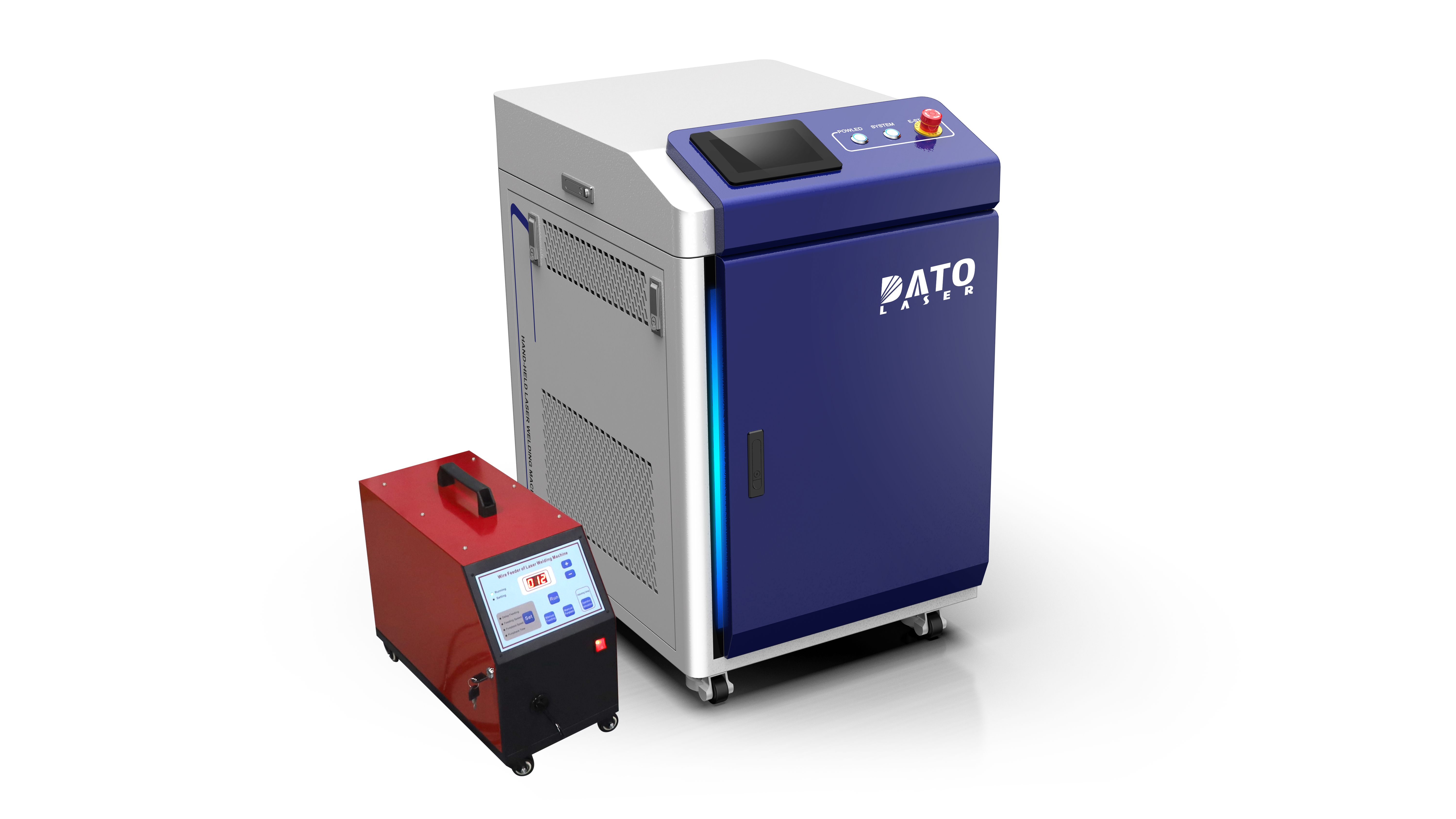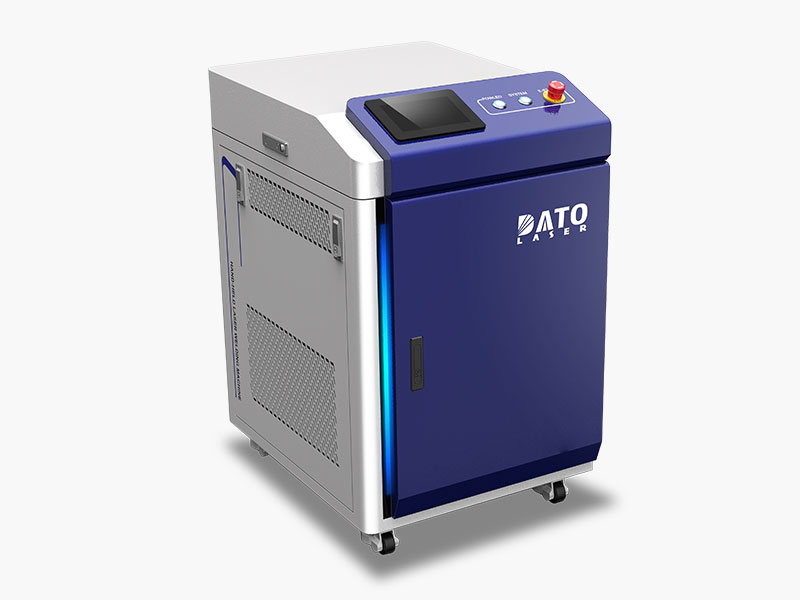What is the best way to ensure strong, defect-free laser welds?

Achieving Perfect Laser Welds: A Comprehensive Guide to Defect-Free Results
Understanding the Fundamentals of Laser Welding Excellence
Laser welding represents one of the most precise joining methods in modern manufacturing, offering unparalleled advantages in terms of speed, precision, and versatility. At DATO and Leapion, we've observed that achieving consistently strong, defect-free laser welds requires a comprehensive approach that addresses everything from equipment selection to post-weld quality control. The journey to perfect laser welds begins with understanding the fundamental principles that govern this sophisticated process.
Laser welding creates joints by focusing intense light energy onto a precise area, melting the materials and allowing them to fuse together upon cooling. Unlike conventional welding methods, laser welding delivers highly concentrated energy with minimal heat-affected zones, making it ideal for sensitive components and precision applications. However, this precision comes with its own set of challenges that must be systematically addressed to ensure optimal results.
Key Factors Affecting Laser Weld Quality
Material Selection and Preparation
The foundation of any successful laser weld begins with proper material selection and preparation. Different materials respond uniquely to laser energy, with factors such as reflectivity, thermal conductivity, and melting point significantly influencing weldability. For instance, highly reflective materials like aluminum or copper require higher power lasers or specific wavelengths to achieve effective energy absorption.
Surface preparation plays an equally critical role in weld quality. Contaminants such as oil, grease, oxide layers, or even fingerprints can introduce porosity, inclusions, or incomplete fusion in the weld. A methodical cleaning protocol using appropriate solvents, mechanical cleaning methods, or specialized laser cleaning equipment should be established as a non-negotiable step in the pre-welding process.
The fit-up between components must be precisely controlled, as laser welding typically requires gap tolerances of less than 0.1mm for optimal results. Inconsistent gaps can lead to underfill, incomplete penetration, or excessive drop-through, compromising both the aesthetic and structural integrity of the weld.
Laser Parameters Optimization
Achieving the perfect balance of laser parameters represents perhaps the most nuanced aspect of producing defect-free welds. Power density, pulse shape, duration, frequency, and focus position must all be carefully calibrated based on the specific application requirements.
Laser power directly influences penetration depth and weld width, but excessive power can lead to material vaporization, spatter, or keyhole instability. Conversely, insufficient power may result in incomplete penetration or poor fusion. Modern fiber laser welding machines from DATO offer precise power control capabilities, allowing operators to fine-tune this critical parameter.
Welding speed affects heat input per unit length, with slower speeds generally producing deeper penetration but potentially introducing more heat-related defects. Faster speeds reduce heat input but may compromise penetration depth. Finding the optimal speed for each application requires careful testing and validation.
Focus position determines where the maximum energy concentration occurs relative to the material surface. Adjusting this parameter can dramatically influence weld characteristics, with surface focusing typically producing wider, shallower welds, while focusing below the surface creates narrower, deeper penetration profiles.
Shielding Gas Selection and Delivery
The role of shielding gas in laser welding extends beyond simply protecting the molten pool from atmospheric contamination. The right shielding gas, delivered with proper flow and distribution, can significantly enhance weld quality by stabilizing the keyhole, reducing plasma formation, and improving the overall energy coupling into the material.
Argon, helium, nitrogen, or carefully formulated mixtures are commonly employed, with the selection depending on the base materials, joint configuration, and desired weld characteristics. Helium, with its high ionization potential and thermal conductivity, often proves beneficial for deep penetration welds, while argon may be preferred for more sensitive applications where minimal heat input is desired.
The delivery method matters significantly as well. Coaxial nozzles, side jets, or custom-designed gas delivery systems should be configured to ensure complete coverage of the weld zone without disrupting the laser beam or introducing turbulence that could compromise shielding effectiveness.
Advanced Techniques for Defect Prevention
Real-time Monitoring and Adaptive Control
Modern laser welding systems increasingly incorporate sophisticated monitoring capabilities that can detect and respond to process variations in real-time. These systems typically employ a combination of sensors, including photodiodes, high-speed cameras, pyrometers, and spectroscopic analyzers, to gather comprehensive data about the welding process.
By monitoring parameters such as melt pool size, temperature, plasma formation, and back-reflection, these systems can identify potential defects before they become permanent. More advanced systems incorporate closed-loop feedback mechanisms that automatically adjust laser parameters to maintain optimal conditions throughout the weld.
DATO's latest generation of laser welding machines integrates these monitoring capabilities with machine learning algorithms that continuously refine the process based on accumulated data, effectively creating a self-improving system that delivers increasingly consistent results over time.
Beam Shaping and Manipulation
The ability to precisely control the spatial and temporal characteristics of the laser beam represents a significant advancement in defect prevention. Beam shaping technologies allow engineers to customize the energy distribution to address specific challenges associated with different materials and joint configurations.
For instance, beam oscillation techniques can stabilize keyhole dynamics, reduce porosity, and improve bridging capability across wider gaps. Dual-beam configurations, where a second beam preheats the material or controls cooling rates, can dramatically reduce cracking in sensitive materials.
Temporal pulse shaping enables precise control over the heating and cooling cycles, with ramped profiles often proving effective at reducing spatter and cracking in materials prone to thermal shock. These advanced manipulation techniques expand the processing window for challenging materials and joint configurations.
Metallurgical Considerations and Heat Management
Understanding the metallurgical transformations that occur during laser welding is essential for preventing defects related to material properties. Different alloys exhibit unique behaviors when subjected to rapid heating and cooling cycles, potentially forming brittle phases, experiencing hot cracking, or developing other microstructural issues.
Pre-heating can be beneficial for materials with high thermal conductivity or those prone to hardening, as it reduces thermal gradients and slows cooling rates. Post-weld heat treatment may also be necessary to relieve residual stresses or temper hardened zones.
Careful joint design that accounts for thermal expansion and contraction can minimize distortion and residual stress. Strategic clamping arrangements help maintain precise positioning throughout the thermal cycle while allowing for controlled movement to accommodate dimensional changes.
Quality Control and Validation Methodologies
Non-Destructive Testing Approaches
Comprehensive quality assurance for laser welds typically employs multiple inspection methods, each offering unique insights into weld integrity. Visual inspection, while seemingly basic, remains a valuable first-line assessment when performed by trained personnel using appropriate magnification and lighting.
Radiographic testing provides detailed information about internal defects such as porosity, inclusions, or lack of fusion. Ultrasonic inspection offers excellent sensitivity for detecting planar defects like cracks and can be automated for high-volume production environments.
For applications where surface finish is critical, dye penetrant testing highlights even microscopic surface-breaking defects. Magnetic particle inspection proves effective for ferromagnetic materials, revealing surface and near-surface discontinuities with high sensitivity.
Destructive Testing for Process Validation
While non-destructive methods provide valuable information about production welds, destructive testing remains essential during process development and validation phases. Cross-sectional analysis reveals the true penetration profile, fusion characteristics, and microstructural details that determine weld performance.
Tensile testing quantifies the joint's mechanical properties, including ultimate strength, yield point, and elongation. Bend testing evaluates ductility and can reveal fusion defects that might not be apparent in tensile tests. Impact testing assesses toughness, particularly important for applications subject to dynamic loading.
Hardness mapping across the weld zone, heat-affected zone, and base material provides insights into potential brittle regions or softening that could compromise performance. Corrosion testing evaluates whether the welding process has compromised the material's environmental resistance.

Practical Implementation Strategies
Developing Robust Welding Procedures
Creating a comprehensive welding procedure specification (WPS) serves as the foundation for consistent, defect-free production. This document should detail all critical parameters, including:
Laser type, power range, and beam characteristics
Travel speed and focus position
Shielding gas composition and flow rates
Material preparation requirements
Fixturing and positioning specifications
Pre-heating and post-weld treatment requirements
Acceptance criteria and inspection methods
Procedure qualification testing validates that the specified parameters consistently produce welds meeting all quality requirements. This typically involves creating test coupons that undergo both non-destructive and destructive evaluation to verify mechanical properties, penetration characteristics, and defect levels.
Operator Training and Certification
Even with advanced automation, operator knowledge significantly impacts weld quality. Comprehensive training programs should cover fundamental laser safety, process understanding, parameter selection, defect recognition, and troubleshooting strategies.
Hands-on training with actual production equipment ensures operators develop the practical skills needed to maintain consistent quality. Certification programs that include both theoretical knowledge assessment and practical demonstration help maintain standards and identify areas for additional training.
Regular refresher training keeps operators updated on new techniques, equipment capabilities, and quality requirements. Creating a culture of continuous improvement encourages operators to contribute insights from their daily experience, often leading to valuable process refinements.
Maintenance and Calibration Protocols
Preventive maintenance schedules for laser welding equipment should address all critical components, including the laser source, beam delivery system, motion control, and auxiliary systems. Regular inspection and cleaning of optics are particularly important, as even minor contamination can affect beam quality and energy distribution.
Calibration of key parameters such as power output, beam profile, and positioning accuracy should be performed at scheduled intervals using traceable standards. Documentation of all maintenance activities and calibration results provides valuable historical data for troubleshooting and process improvement.
Conclusion
Achieving consistently strong, defect-free laser welds requires a systematic approach that addresses every aspect of the process, from material selection and preparation to equipment maintenance and operator training. By implementing comprehensive quality control measures, optimizing process parameters, and leveraging advanced monitoring technologies, manufacturers can significantly reduce defect rates and improve overall weld quality.
At DATO and Leapion, our extensive experience in laser welding technology has demonstrated that excellence in this field comes not from addressing any single factor but from the meticulous integration of best practices across the entire production ecosystem. Through continuous research and development, we remain committed to advancing laser welding capabilities and helping our customers achieve the highest standards of weld quality and reliability.
Whether you're working with challenging materials, complex geometries, or demanding performance requirements, the principles outlined in this guide provide a foundation for developing robust laser welding processes that consistently deliver defect-free results. By partnering with experienced laser equipment providers and investing in proper training and quality systems, manufacturers can fully realize the exceptional benefits that laser welding technology offers.
Related Blogs
-
 Exploring the Safety, Precision, and Industrial Benefits of Laser Surface CleaningIn today’s fast-paced industrial world, where quality, efficiency, and sustainability are top priorities, manufacturers are constantly seeking better ways to clean metal surfaces without compromising material integrityBlog
Exploring the Safety, Precision, and Industrial Benefits of Laser Surface CleaningIn today’s fast-paced industrial world, where quality, efficiency, and sustainability are top priorities, manufacturers are constantly seeking better ways to clean metal surfaces without compromising material integrityBlog -
 A Complete Guide by DATO and LeapionIn modern industry, surface preparation and maintenance play a crucial role in achieving high-quality manufacturing results. Laser cleaning machines have emerged as one of the most innovative, efficient, and environmentally friendly tools for removing contaminantsBlog
A Complete Guide by DATO and LeapionIn modern industry, surface preparation and maintenance play a crucial role in achieving high-quality manufacturing results. Laser cleaning machines have emerged as one of the most innovative, efficient, and environmentally friendly tools for removing contaminantsBlog -
 Laser cleaning machines are revolutionizing industrial surface cleaning by offering a faster, safer, and more eco-friendly alternative to traditional methods. Whether removing rust, paint, oil, oxide, or other surface contaminants, laser cleaning has become a cutting-edge solution in manufacturing,Blog
Laser cleaning machines are revolutionizing industrial surface cleaning by offering a faster, safer, and more eco-friendly alternative to traditional methods. Whether removing rust, paint, oil, oxide, or other surface contaminants, laser cleaning has become a cutting-edge solution in manufacturing,Blog -
 Introduction: Transforming EV Battery Manufacturing Through Laser TechnologyThe electric vehicle revolution has accelerated dramatically over the past decade, bringing with it unprecedented challenges and opportunities in battery manufacturing. As global automakers commit billions to electrificationBlog
Introduction: Transforming EV Battery Manufacturing Through Laser TechnologyThe electric vehicle revolution has accelerated dramatically over the past decade, bringing with it unprecedented challenges and opportunities in battery manufacturing. As global automakers commit billions to electrificationBlog













